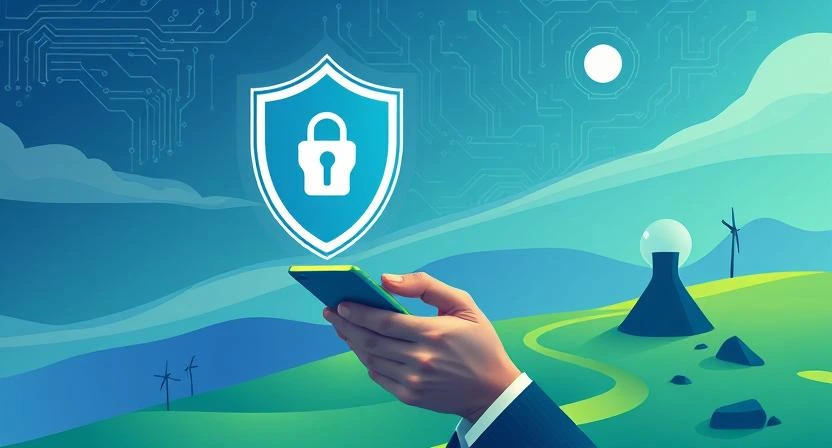In the digital age, we’ve created a peculiar paradox. We lock our homes with multiple deadbolts, secure our cars with advanced alarm systems, and carefully guard our wallets, yet when it comes to protecting our digital lives—which often contain more valuable information than our physical possessions—we rely on a single password that we probably use across multiple accounts.
Two-factor authentication (2FA) represents one of the most effective shields against cyber threats, yet adoption rates remain surprisingly low. The real story isn’t just about the technology itself, but about the fascinating psychological barriers that prevent people from embracing this crucial security measure, and how understanding these barriers can transform your approach to digital safety.
Read Also: Will AI Kill the SaaS Industry? The Buy vs Build Debate Heats Up
The Invisible Fortress: Understanding What 2FA Really Protects
Most discussions about two-factor authentication focus on the mechanics—codes sent to your phone, authenticator apps, or hardware tokens. But the true value of 2FA becomes clear when you consider what hackers are actually after in your digital life.
Your email account isn’t just a communication tool; it’s the master key to your entire digital existence. With access to your email, cybercriminals can reset passwords for your banking accounts, shopping profiles, work systems, and social media platforms. They can impersonate you to friends and family, access your photos and personal documents, and even apply for credit in your name.
Two-factor authentication creates what security experts call “defense in depth.” Even if someone discovers your password through a data breach, phishing attack, or by watching you type it in a coffee shop, they still can’t access your accounts without that second verification step. This isn’t just about adding an extra layer—it’s about creating a security moat that’s nearly impossible for remote attackers to cross.
The Convenience Trap: Why Our Brains Resist Security
Human psychology plays a fascinating role in cybersecurity adoption. Our brains are wired to prioritize immediate convenience over future security threats, a cognitive bias known as hyperbolic discounting. When you’re trying to quickly check your email or log into a shopping site, the extra thirty seconds required for 2FA feels like an eternity, while the abstract threat of being hacked feels distant and unlikely.
This resistance is amplified by what psychologists call the optimism bias—our tendency to believe that bad things are more likely to happen to others than to ourselves. We read about massive data breaches and cyber attacks, but we subconsciously think, “That won’t happen to me.” This mental shortcut served our ancestors well when assessing physical dangers, but it becomes a liability in our interconnected digital world where threats are invisible and constantly evolving.
The solution isn’t to fight against human nature, but to work with it. Modern 2FA implementations have become increasingly user-friendly, with biometric options like fingerprint scanning and facial recognition that actually make logging in faster and more convenient than typing passwords. Push notifications that require just a tap to approve login attempts have transformed 2FA from a burden into a seamless experience.
The Evolution of Digital Identity Theft
Today’s cybercriminals operate with the sophistication of multinational corporations. They don’t just want your password—they want to become you digitally. This process, known as account takeover, involves systematically gaining access to multiple aspects of your online presence to build a complete profile that can be monetized in various ways.
Without two-factor authentication, a successful password compromise can trigger a domino effect. Hackers often gain initial access through one account, then use the information found there to break into additional accounts. They might discover your pet’s name from social media posts, your high school from LinkedIn, or your favorite vacation destination from photos—all potential answers to security questions that protect other accounts.
The financial impact extends beyond direct theft. Identity restoration services report that victims spend an average of 100 hours and thousands of dollars recovering from comprehensive identity theft. The emotional toll includes stress, anxiety, and a lasting sense of violation that can persist long after the financial damage is resolved.
Breaking Down the 2FA Ecosystem
The landscape of two-factor authentication has evolved far beyond simple text message codes. Understanding the different options available helps you choose the right balance of security and convenience for your lifestyle.
SMS-based verification, while better than no 2FA at all, represents the most vulnerable option. Text messages can be intercepted through SIM swapping attacks, where criminals convince phone carriers to transfer your number to a device they control. Despite this limitation, SMS 2FA still blocks the vast majority of automated attacks and provides significant protection for average users.
Authenticator applications like Google Authenticator, Microsoft Authenticator, or Authy generate time-based codes that change every thirty seconds. These apps work even when your phone lacks internet connectivity and provide stronger security than SMS because they’re not vulnerable to SIM swapping attacks. The codes are generated using a shared secret between your device and the service, making them nearly impossible for attackers to predict or intercept.
Hardware security keys represent the gold standard of two-factor authentication. These small devices, which can be as simple as a USB stick or as advanced as a Bluetooth-enabled token, provide cryptographic proof of your identity that’s virtually impossible to duplicate. Major technology companies like Google report that employees using hardware keys have experienced zero account compromises from phishing attacks.
Biometric authentication integrates seamlessly into modern smartphones and laptops. Fingerprint scanners, facial recognition systems, and even voice recognition can serve as the second factor, providing security that’s both stronger than traditional passwords and more convenient to use.
The Network Effect of Security
One often overlooked aspect of two-factor authentication is how your security choices affect others in your network. When your account gets compromised, hackers don’t just gain access to your information—they gain the ability to target your contacts through social engineering attacks.
Compromised email accounts are frequently used to send convincing phishing messages to victims’ contacts, leveraging the trust that exists in established relationships. These attacks are particularly effective because they come from known senders and often reference real conversations or shared experiences that the hacker discovered in the compromised account.
By securing your accounts with 2FA, you’re not just protecting yourself—you’re contributing to the overall security of your social and professional networks. This creates a positive feedback loop where increased adoption of security measures makes the entire ecosystem more resistant to attack.
Practical Implementation Strategies
Successfully integrating two-factor authentication into your digital life requires a strategic approach that balances security with usability. Start by identifying your most critical accounts—typically email, banking, and any work-related systems—and enable 2FA on these first.
Many people make the mistake of trying to secure everything at once, which can lead to 2FA fatigue and eventual abandonment of the practice. Instead, gradually expand your use of 2FA as you become comfortable with the routine. Most modern platforms make the setup process straightforward, often providing step-by-step guidance and backup codes for emergency access.
Consider your lifestyle and device preferences when choosing 2FA methods. If you frequently travel internationally, SMS-based codes might be unreliable due to roaming restrictions. If you often work in environments where phone use is restricted, hardware keys might provide more flexibility than app-based authenticators.
Looking Beyond Today’s Threats
The cybersecurity landscape continues to evolve rapidly, with artificial intelligence enabling both more sophisticated attacks and more robust defenses. Machine learning algorithms can analyze patterns in user behavior to detect suspicious login attempts, while attackers use similar technologies to craft more convincing phishing campaigns and social engineering attacks.
Passwordless authentication represents the next frontier in digital security, with major technology companies working toward systems that rely entirely on biometric data, hardware tokens, or cryptographic certificates rather than traditional passwords. These systems promise to eliminate many of the vulnerabilities that two-factor authentication is designed to address while providing even greater convenience for users.
However, the transition to passwordless systems will take years to complete across all platforms and services. In the meantime, two-factor authentication remains the most practical and effective way to secure your digital identity against the vast majority of threats you’re likely to encounter.
The Real Cost of Digital Insecurity
Understanding the true impact of inadequate cybersecurity requires looking beyond immediate financial losses to consider the broader implications for your personal and professional life. A compromised social media account might seem like a minor inconvenience, but if it contains years of personal photos, conversations, and memories, the loss can be devastating.
Professional consequences can be equally severe. Many careers today depend on digital reputation and online presence. A compromised LinkedIn account used to send spam or inappropriate messages to professional contacts can damage relationships that took years to build. Email accounts containing sensitive work documents or client communications represent potential liabilities that extend far beyond personal inconvenience.
The investment required to implement comprehensive two-factor authentication—typically just a few hours of setup time and perhaps the cost of a hardware security key—pales in comparison to the potential losses from a successful cyber attack.
Conclusion
Two-factor authentication isn’t just a technology solution—it’s a mindset shift toward taking proactive control of your digital security. By understanding the psychological barriers that make us resist additional security measures, we can make more informed decisions about protecting our digital lives.
The goal isn’t perfect security, which is neither achievable nor practical for most people. Instead, the objective is to raise the cost and complexity of attacking your accounts to the point where cybercriminals will move on to easier targets. In a world where automated attacks can attempt thousands of password combinations per second, the simple act of requiring a second form of verification makes your accounts exponentially more secure.
As we become increasingly dependent on digital services for work, communication, finance, and entertainment, the question isn’t whether we can afford to implement strong security measures like 2FA—it’s whether we can afford not to. The few extra seconds required for two-factor authentication today can save you countless hours and potentially thousands of dollars in the future, making it one of the most valuable investments you can make in your digital wellbeing.

